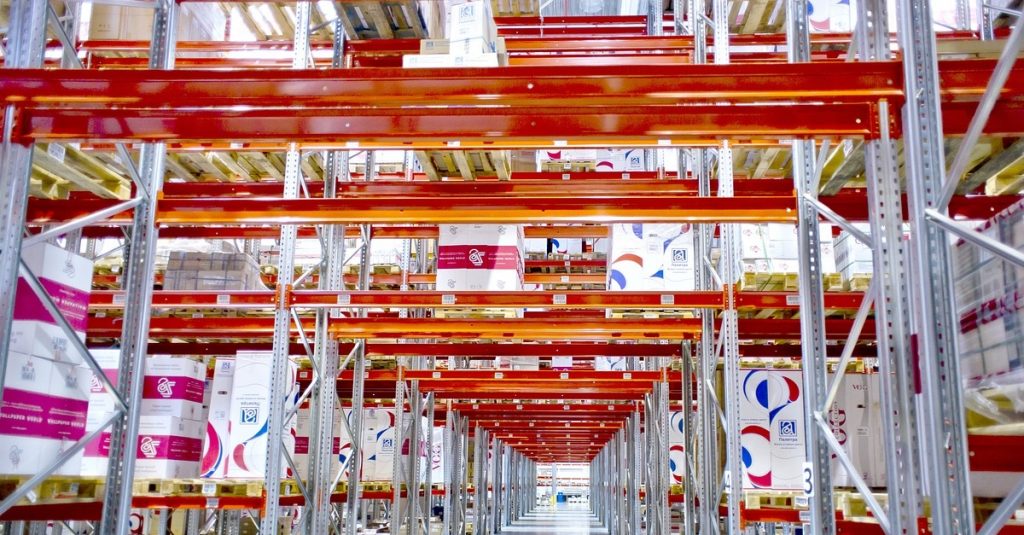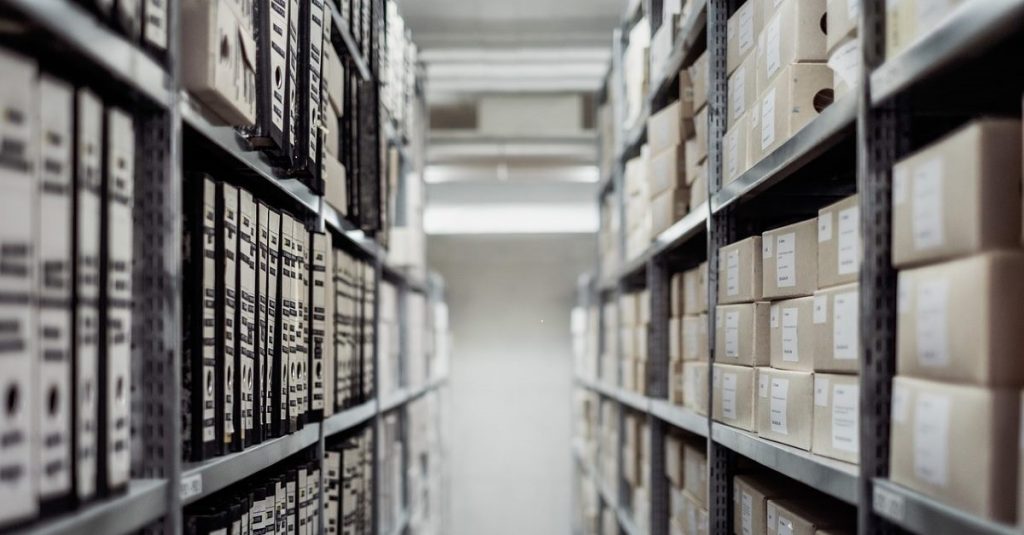How LED Lighting Can Improve Warehouse Safety & Productivity
LED lighting has revolutionised the way we light up our homes and workplaces. But did you know that it can also improve warehouse safety and productivity? LED lighting technology has come a long way in recent years, and it now offers a range of benefits that can help warehouse operators create a safer and more productive working environment.
One of the key benefits of LED lighting is its energy efficiency. LED bulbs consume up to 80% less energy than traditional incandescent bulbs, which means they generate less heat and last longer. This makes them an ideal choice for warehouse lighting, as they can help to reduce the risk of fire and other hazards. In addition, LED bulbs are more durable and resistant to shock and vibration, which means they are less likely to break or fail in harsh warehouse environments.
Another advantage of LED lighting is its ability to provide a brighter, more uniform light. This can help to improve visibility and reduce the risk of accidents and injuries. LED bulbs can also be dimmed or adjusted to suit different lighting needs, which means warehouse operators can create a customised lighting environment that meets their specific requirements. All of these benefits add up to a safer, more productive warehouse that can help businesses to save time and money in the long run.
Understanding LED Lighting
LED lighting is a modern lighting technology that offers a range of benefits compared to traditional lighting options. LED stands for Light Emitting Diode, and these lights use semiconductor material to produce light. LED lighting is increasingly being used in warehouses to improve safety and productivity.
Benefits of LED Lighting
There are several benefits of LED lighting that make it a popular option for warehouses:
- Energy Efficiency: LED lights use significantly less energy than traditional lighting options, resulting in lower energy bills for warehouses.
- Long Lifespan: LED lights have a longer lifespan than traditional lights, meaning they need to be replaced less frequently. This can save warehouses money on maintenance costs.
- Better Visibility: Thanks to the wide variety of fixtures available on the market today, LED lights provide highly adjustable, brighter and more consistent lighting, improving visibility in warehouses and reducing the risk of accidents.
- Reduced Heat Emissions: LED lights emit less heat than traditional lights, making them a safer option for warehouses.
- Environmentally Friendly: LED lights do not contain hazardous materials, making them a more environmentally friendly option than traditional lights.
Overall, LED lighting is a versatile and cost-effective option for warehouses looking to improve safety and productivity.

Importance of Warehouse Safety
Warehouse safety is of utmost importance as it not only ensures the well-being of the employees but also contributes to the productivity of the warehouse. A safe warehouse environment is crucial to prevent accidents and injuries, reduce downtime, and increase efficiency.
Common Warehouse Hazards
Warehouses are often filled with heavy machinery, equipment, and products, which can pose a significant threat to workers. Some of the most common warehouse hazards include:
- Slips, trips, and falls due to wet floors or cluttered walkways.
- Collisions with forklifts, pallet jacks, and other vehicles.
- Exposure to hazardous materials and chemicals.
- Injuries from falling objects or improperly stacked products.
- Electrical hazards from faulty wiring or equipment.
Consequences of Poor Warehouse Safety
Poor warehouse safety can result in severe consequences, such as:
- Lost productivity due to accidents and injuries.
- Increased insurance costs and workers’ compensation claims.
- Legal liabilities and fines from regulatory agencies.
- Damage to equipment and inventory.
- Decreased employee morale and turnover.
Therefore, it is essential to implement proper safety measures and training programs to ensure a safe and productive warehouse environment.

Role of Lighting in Warehouse Safety
Illumination Levels
Proper illumination levels are crucial for warehouse safety. Insufficient light can cause accidents, while excessive light can cause glare and reduce visibility. LED lighting perfectly balances illumination levels, ensuring a safe and productive work environment.
According to the Health and Safety Executive (HSE), the recommended illumination levels for warehouses are:
| Task | Illumination Level (lux) |
| General Warehouse Areas | 200 |
| Packing/Assembly Areas | 500 |
| Receiving/Dispatch Areas | 300 |
Colour Temperature
Colour temperature refers to the colour of light emitted by a bulb. LED lighting can be adjusted to provide the ideal colour temperature for warehouse environments. A colour temperature of 5000K is recommended for warehouses, as it provides a clear, bright light that enhances visibility and reduces eye strain.
Glare Reduction
Glare can be a major safety hazard in warehouses, as it can cause eye strain, headaches, and reduce visibility. LED lighting can be designed to reduce glare, ensuring a safe and productive work environment. Anti-glare fixtures and diffusers can be used to reduce glare and improve visibility.
Enhancing Productivity with LED Lighting
Impact of Lighting on Productivity
LED lighting can have a significant impact on operational productivity in a warehouse. Proper lighting can reduce errors, increase accuracy, and improve overall work efficiency. Poor lighting can lead to eye strain, headaches, and fatigue, which can all contribute to decreased productivity.
Studies have shown that LED lighting can improve productivity by up to 20%. LED lighting provides a brighter and more consistent light, which can help workers see better and reduce errors. Additionally, LED lighting does not flicker or produce glare, which can cause eye strain and headaches.
Lighting Layout and Design
The layout and design of LED lighting in a warehouse is crucial to enhancing productivity. Proper placement of lights can reduce shadows and increase visibility, which can help workers see better and reduce errors.
When designing the lighting layout, it is important to consider the type of work being done in each area of the warehouse. For example, areas, where fine detail work is performed, may require brighter lighting than areas where larger items are being moved.
In addition to the placement of lights, the colour temperature of LED lighting can also impact productivity. Cooler white light (5000K-6500K) can increase alertness and focus, while warmer white light (2700K-3000K) can create a more relaxed atmosphere.
Choosing the Right LED Lighting Solution
Factors to Consider
When choosing LED lighting for a warehouse, there are several factors to consider:
- Brightness: The brightness of the LED lights should be appropriate for the task at hand. Too little light can cause accidents, while too much light can cause glare and eye strain.
- Colour Temperature: The colour temperature of the LED lights can affect the mood and productivity of workers. Cooler temperatures (5000K-6500K) are better for productivity, while warmer temperatures (2700K-3000K) are better for relaxation.
- Energy Efficiency: LED lights are more energy-efficient than traditional lighting solutions, so choosing high-efficiency LED lights can save money on energy bills.
- Durability: The LED lights should be durable enough to withstand the conditions of the warehouse, including temperature changes and moisture.
- Cost: The cost of the LED lights should be taken into consideration, as well as the potential long-term savings from energy efficiency and maintenance costs.
Best Practices for LED Lighting Installation
Proper installation of LED lighting can maximise the benefits of the lighting solution. Here are some best practices:
- Use a Professional: A professional electrician should be hired to install the LED lights, as they have the necessary expertise to ensure proper installation.
- Plan the Layout: The layout of the LED lights should be planned carefully to ensure even lighting throughout the warehouse.
- Use Motion Sensors: Motion sensors can be installed to turn off lights in areas that are not in use, saving energy and money.
- Perform Regular Maintenance: Regular maintenance should be performed on the LED lights to ensure they are working properly and efficiently.
- Consider Smart Lighting: Smart lighting solutions can be used to control the lighting remotely, adjust the brightness and colour temperature, and monitor energy usage.

Advanced your warehouse operations with IoSCM. Call 0800 1422 522 today to find out more.
